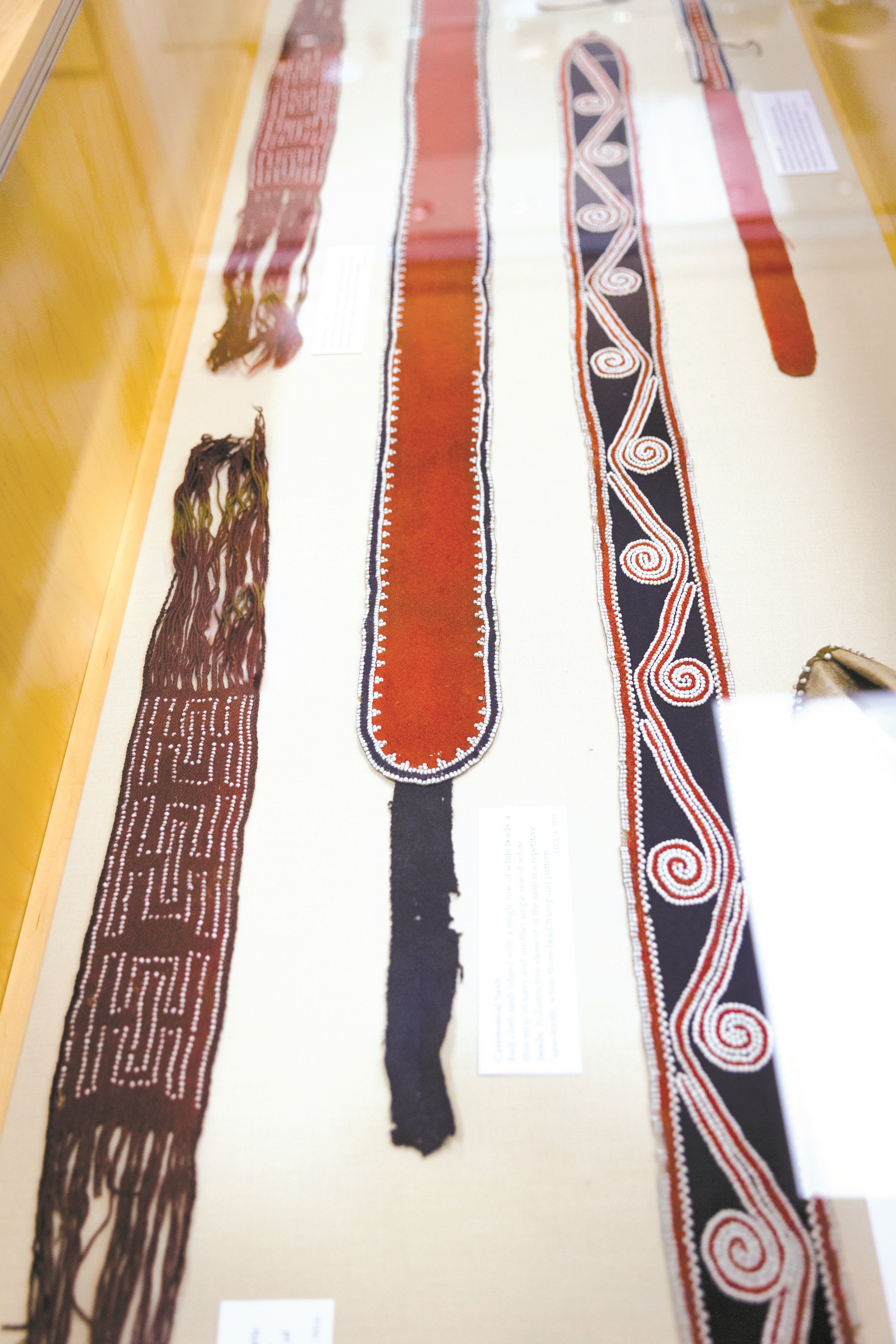‘1700s Beadwork of Southeastern Tribes’;Southeastern beaded art now on display at Chickasaw Cultura
CONTRIBUTED BY Kristen Gill, Public Affairs, Media Relations.
This article appeared in the September 2015 edition of the Chickasaw Times
SULPHUR, Okla. - Visitors to the Chickasaw Cultural Center will be transported to a time in American history before the American Revolution. A new exhibit now on display tells this story of Southeastern tribes through delicate beadwork that dates to the 18th century.
The “1700s Beadwork of Southeastern Tribes” exhibit is assembled in the Special Collections Room in the Holisso Center on the Cultural Center campus. University of Aberdeen (Scotland) Head of Museums Neil Curtis oversaw and coordinated the exhibit.
The exhibit is on loan from the University of Aberdeen through November.
“The sort of patterns and the suggestion is that these patterns appear in ancient pottery, and they also may reflect patterns of stomp dances with the circles and spirals,” Mr. Curtis said. “So thinking of the beadwork as part of that living culture is not a thing, it is actually part of people’s lives and of movement and sound. It is much more than just an object in a glass case.”
Earlier this summer, Mr. Curtis presented at the Chickasaw Cultural Center the story of the artifacts and how they came to be in the possession of Scotland’s University of Aberdeen. The collection was donated by William Ogilvie, a 1764 graduate of Marischal College, which is now a part of the university.
After college, Mr. Ogilvie traveled to America on one of the many trips he would make throughout his life. He was employed as personal secretary to John Stuart, Superintendent of Indian Affairs in the southern district of the British Colonies in North America.
He assisted in treaties over land negotiations between tribes and the British crown. Mr. Curtis discovered one record that named Mr. Ogilvie as present during the Treaty of Augusta in 1773. The Cherokee Nation, with the treaty, ceded two million acres of land to the British Crown in exchange for being allowed to continue to live on the land.
During this time, the American Revolution was at hand. Mr. Ogilvie’s loyalty to King George may have influenced him to travel back to England where he continued to uphold treaties by sending traded goods and gifts marked with the British government stamp from England to Charleston in the Carolinas. Colonists, already in upheaval, recognized the enemy stamp and were quick to keep the packages paid for with Mr. Ogilvie’s credit.
Although the exact time Mr. Ogilvie acquired the beadwork pieces is not known, it is assumed it was during his many travels as a merchant and trader in what would become the southern states of the U.S.
Mr. Curtis spoke of the role the beadwork has today and in history. He said there was something to discover and something to be learned from the technique observed in the ancient artwork.
“It’s an important shared story we’ve got with the Southeastern tribes and the northeast of Scotland, so I want to build that sense of sharing and learning,” he said.
One piece, he said, was especially rare because it was unfinished. He said by it being unfinished, it showed how these pieces were made and brought to life the story of the piece.
With the collection on display at the Cultural Center, more history of the pieces will come to light. The “1700s Beadwork of Southeastern Tribes” exhibit will be on display at the Chickasaw Cultural Center through November.
For more information, contact the Chickasaw Cultural Center at (580) 622-7130 or visit www.ChickasawCulturalCenter.com.